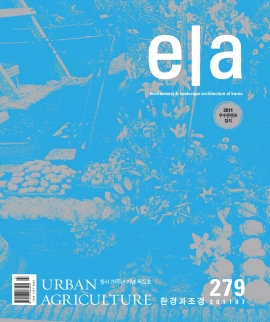The Impacts of Food Miles
on The Pattern of Footprint of Bangkok’ Food supply
서론
방콕 도시농업의 현주소
태국의 수도인 방콕에는 지명과 관련 여러 가지 흥미로운 이야기가 전해지고 있다. 그 중 하나를 살펴보면 방콕이라는 지명은 차오프라야 강변에 무성하게 우거진 올리브나무숲(마콕Ma-Kok)에서 비롯됐다고 한다. 방마콕Bang-ma-kok은 소출이 좋은 올리브나무가 있는 정착지라는 의미이다.
수년 뒤 방마콕으로부터 방콕이란 지명이 탄생하게 된다. 올리브나무 말고도 이 지역에는 다양한 식생이 분포하고 있었다. 방콕은 차오프라야 강하구에 자리 잡고 있으며,�비옥한 토양 덕분에 생산력이 매우 높은 지역이다. 초기 정착민들은 이처럼 생산력 높은 토지에서 자신들의 곡식, 과일, 그리고 채소 등을 직접 재배했다. 태국 사람이라면 누구나 들어봤을 오랜 경구처럼“논에는 언제나 쌀이 있었고, 물에는 언제나 물고기가 있었다.”
이를 통해 태국의 유서 깊은 수도 방콕이 지닌 번영, 풍요, 그리고 부유한 삶의 방식을 엿볼 수 있다.
오늘날 방콕의 생산력 높은 강어귀 지역은 개발로 인해 도시 공간 속에 편입되었다. 방콕의 넓은 농업 지역은 내팽개쳐졌고, 사람들의 직종이 변함에 따라 그 용도 또한 달라지 게 되었다. 도시 지역은 지표면의 약 2%를 차지할 뿐이지만, 세계 천연 자원의 75%가 도시 지역 거주민들에 의해 소비된다. 10년 후면 95%의 사람들이 도시 지역으로 이주하게 될 것이며, 방콕을 포함한 개발도상국가에서 이러한 현상은 더욱 도드라질 것이다. 이로 인해 빈곤, 천연 자원에 대한 불평등한 접근, 식품 안전성 등의 문제를 비롯 다양한 환경 관련 문제들이 발생하게 될 것이다. 비록 방콕의 농업용 토지가 점차 줄어들고 있지만, 방콕에는 아직도 소중한 식량 공급원이 존재하고 있다. 오늘날 방콕의 도시농업은 대략 세 가지 패턴으로 분류할 수 있다.
Introduction
Existing Urban Agriculture in Bangkok
Bangkok, the capital city of Thailand, has many interesting anecdotes behind its name. One of them tells the story about the existing landscape character of the location that the city has its name after the abundant grove of olive trees (Ma-Kok) on the Chao-Praya River bank. Bang-ma-kok is the settlement with fruitful olive trees. After several years, the name Bangkok has derived from Bang-ma-kok. Besides those olives groves, the area also had variety of vegetations. It was a very productive landscape with fertile soil on the mouth of Chaopraya River. With a sufficiency way of life, the early settlements grew their own crops, fruits and vegetables in this productive landscape. As every Thais have heard in the old phase “here are always rice in the paddy field and fish in the water”it explains the old capital of Thailand and its prosperity, plentiful, and wealthy way of life that always be in Thailand.
Today Bangkok’ productive estuary was developed into urban structures. Many agricultural areas in the city have been abandoned and changed according to the change of people’ professions. Urban area is only 2 percent coverage on earth but more than 75 percent of the world natural resources are utilized by urban residences (UNEP). In two decades, more than 95 percents of people will move to urban areas, especially in developing countries, including Bangkok, and this will lead to urban poverty, in equity access to natural resources, food security, and other urban environmental problems. Despite the decrease of agricultural lands in Bangkok, the city still has its valuable food supply. Three patterns of Bangkok’ urban agriculture still existed today:





